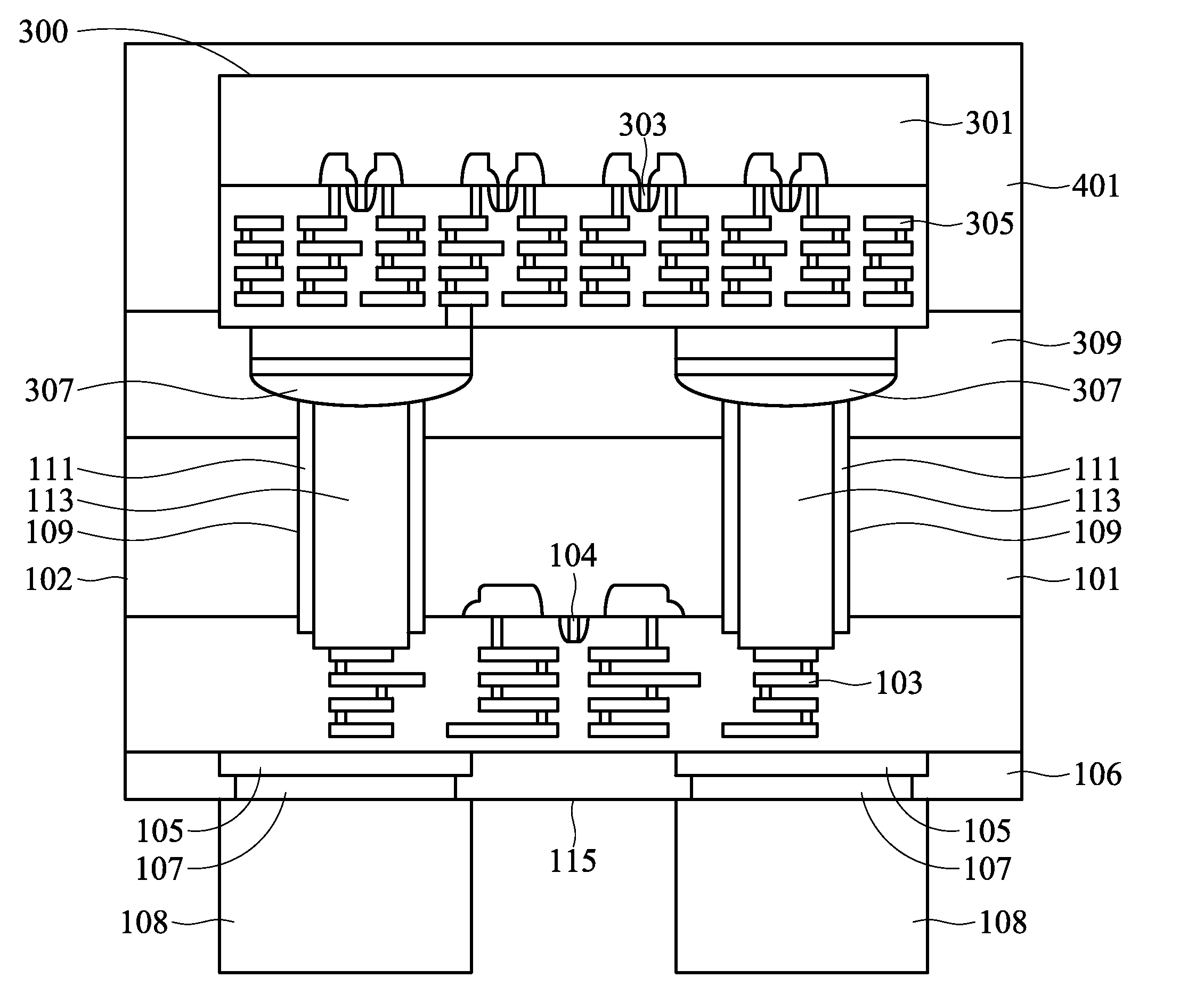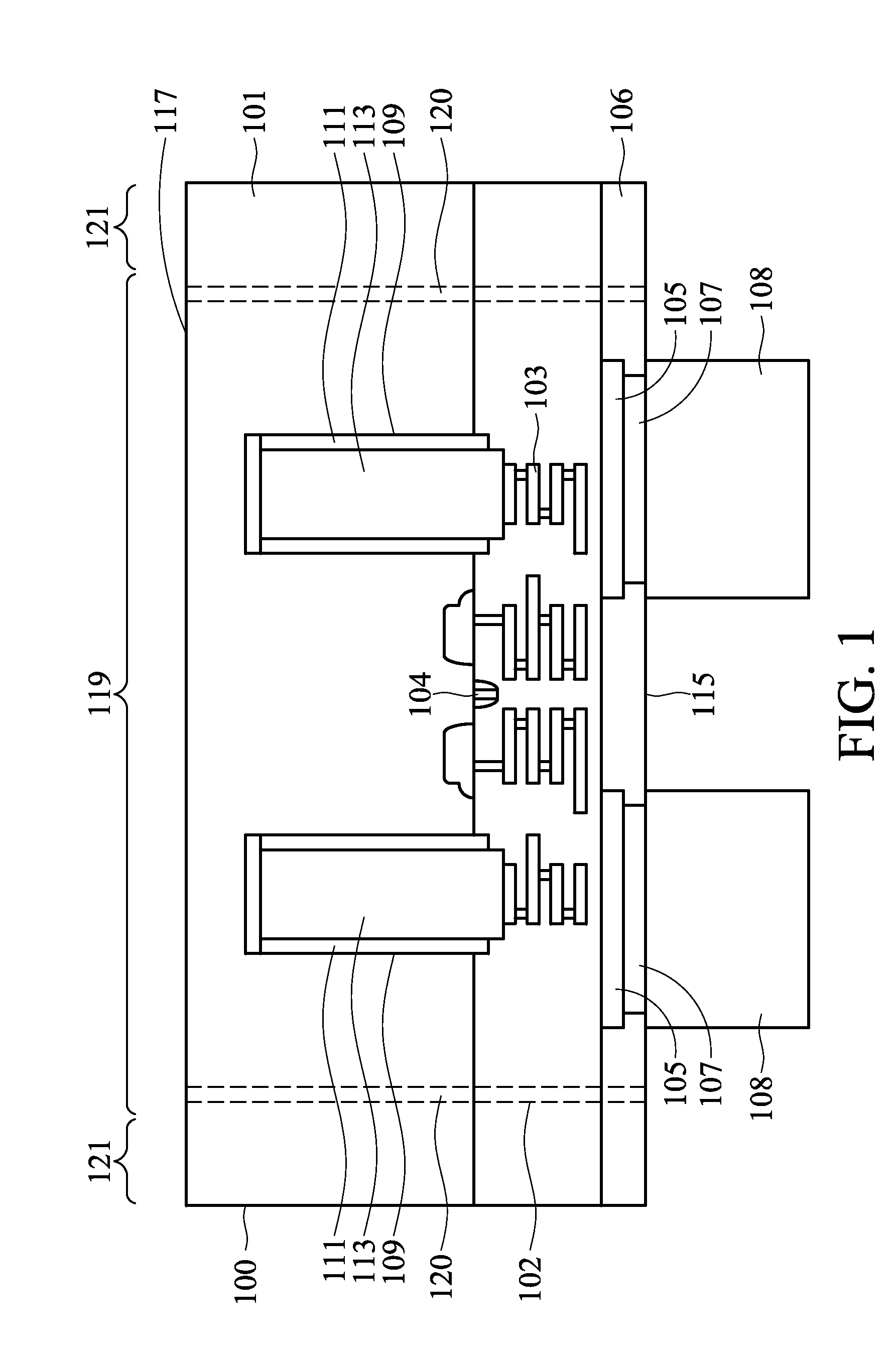Method for Stacking Semiconductor Dies
a technology of semiconductor dies and stacking, which is applied in the direction of semiconductor devices, basic electric elements, electrical appliances, etc., can solve the problems of method failure, material fragility, and inability to withstand the stress of various process steps very well, so as to reduce or eliminate potential damage, improve the yield of dies, and handle stress better
- Summary
- Abstract
- Description
- Claims
- Application Information
AI Technical Summary
Benefits of technology
Problems solved by technology
Method used
Image
Examples
Embodiment Construction
[0017]The making and using of the presently preferred embodiments are discussed in detail below. It should be appreciated, however, that the present invention provides many applicable inventive concepts that can be embodied in a wide variety of specific contexts. The specific embodiments discussed are merely illustrative of specific ways to make and use the invention, and do not limit the scope of the invention.
[0018]The present invention will be described with respect to preferred embodiments in a specific context, namely stacked dies utilizing through-silicon vias in a semiconductor wafer. The invention may also be applied, however, to other thin wafer handling processes.
[0019]With reference now to FIG. 1, there is shown a cross-sectional view of a wafer 100 with a front side 115 and a backside 117. The wafer 100 preferably has a plurality of first semiconductor dies 102 (outlined by the dashed lines) formed in a die area 119 of the wafer 100, a scribe line 120 adjacent to the die...
PUM
 Login to View More
Login to View More Abstract
Description
Claims
Application Information
 Login to View More
Login to View More - R&D
- Intellectual Property
- Life Sciences
- Materials
- Tech Scout
- Unparalleled Data Quality
- Higher Quality Content
- 60% Fewer Hallucinations
Browse by: Latest US Patents, China's latest patents, Technical Efficacy Thesaurus, Application Domain, Technology Topic, Popular Technical Reports.
© 2025 PatSnap. All rights reserved.Legal|Privacy policy|Modern Slavery Act Transparency Statement|Sitemap|About US| Contact US: help@patsnap.com



